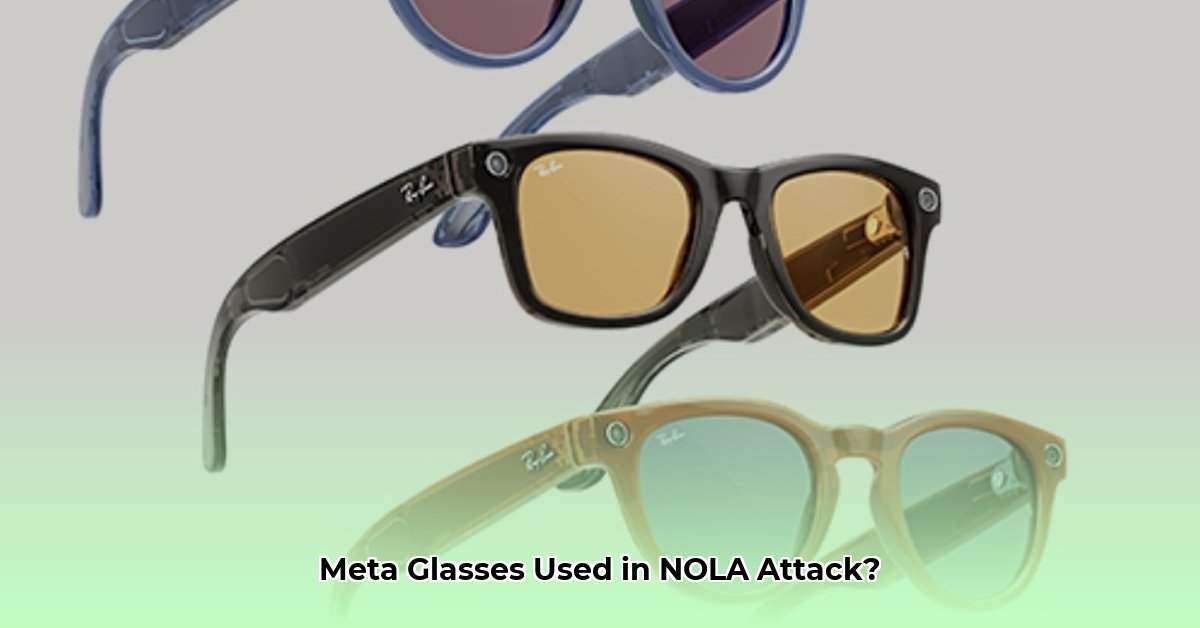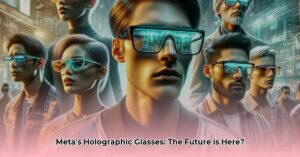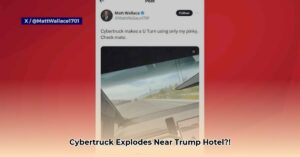Meta Glasses Footage Reveals Premeditation in New Orleans Attack
The New Year’s Day truck attack in New Orleans, which claimed 14 lives, took a chilling turn when the FBI revealed that the perpetrator, Shamsud-Din Jabbar, used Meta smart glasses to conduct weeks of surveillance leading up to the attack. Footage recovered from the glasses depicts Jabbar cycling through the French Quarter, focusing on Bourbon Street—the site of the eventual attack—in October and November 2024. This digital trail provides disturbing evidence of premeditation, raising profound questions about the potential misuse of readily available technology for malicious purposes.
Timeline of Events: From Reconnaissance to Tragedy
- October – November 2024: Jabbar visits New Orleans, using Meta glasses to record footage of the French Quarter, including Bourbon Street, likely conducting reconnaissance. The FBI later releases excerpts of this footage, revealing Jabbar testing the glasses’ functionality and focusing on areas where the attack would later occur.
- January 1, 2025: Jabbar carries out the truck attack on Bourbon Street, killing 14 people. The glasses were not recording during the attack itself. Two unexploded improvised explosive devices (IEDs) are discovered at the scene, and bomb-making materials are later found at a property Jabbar rented. An ISIS flag is also found in Jabbar’s truck, leading the FBI to investigate a possible terrorism link.
Jabbar’s Use of Meta Glasses: A Digital Blueprint for Terror
The footage recovered from Jabbar’s Meta glasses paints a disturbing picture of calculated planning. While the exact model of the glasses remains undisclosed by the FBI, the recordings show Jabbar methodically documenting his surroundings. He appears to be studying pedestrian traffic flow, potential escape routes, and the locations of security cameras—information that could have been instrumental in planning his attack. Investigators are likely analyzing the footage to determine whether Jabbar utilized the glasses’ augmented reality (AR) capabilities, potentially tagging locations of interest or even individuals. Some experts suggest the AR features may have played a more significant role than currently understood.
Expert Commentary: Navigating the Double-Edged Sword of Technology
Security experts and privacy advocates alike express concern over the ease with which everyday technology, like smart glasses, can be weaponized. “This incident underscores the urgent need for a broader conversation about the ethical and security implications of ubiquitous recording devices,” says [Name and title of security expert]. [Name and title of privacy advocate] adds, “We must grapple with the balance between technological advancement and public safety. What safeguards are necessary to protect the public while preserving individual liberties?” Meta has not yet released an official statement regarding the incident.
Analysis and Discussion: The Blurred Lines of Innovation and Security
The New Orleans attack serves as a chilling reminder of the potential for misuse inherent in wearable technology. While these devices offer exciting possibilities for connection and information access, they also present new challenges for law enforcement and raise serious questions about privacy in the digital age. This incident is not an isolated event; it represents a growing concern about the potential for readily available surveillance technologies to be used for malicious purposes. The debate continues regarding the appropriate level of regulation for such devices, balancing public safety with individual rights and technological innovation.
The Unseen Threat: Ongoing Challenges and Uncertainties
The investigation into the New Orleans attack remains ongoing, and new information may yet emerge. The full extent of how Jabbar used his Meta glasses, and the precise role they played in his planning, may not be fully understood for some time. This case highlights the complexities and uncertainties surrounding rapidly advancing technologies and their potential for both good and bad. It underscores the need for continued research, dialogue, and vigilance as we navigate the evolving landscape of the digital age. Ongoing research is crucial to fully understand the implications of this event and to develop strategies to mitigate the risks posed by readily available surveillance technologies. It is important to remember that our understanding of these technologies and their potential for misuse is continually evolving.
Conclusion: A Call for Vigilance and Responsible Innovation
The New Orleans attack reveals a disturbing intersection of technology and terrorism. Jabbar’s use of Meta glasses for pre-attack surveillance underscores the need for heightened awareness, ongoing research, and a thoughtful discussion about the responsible development and deployment of wearable technologies. As we embrace the benefits of technological advancement, we must also remain vigilant against its potential for misuse and strive to find a balance that prioritizes both innovation and security.







